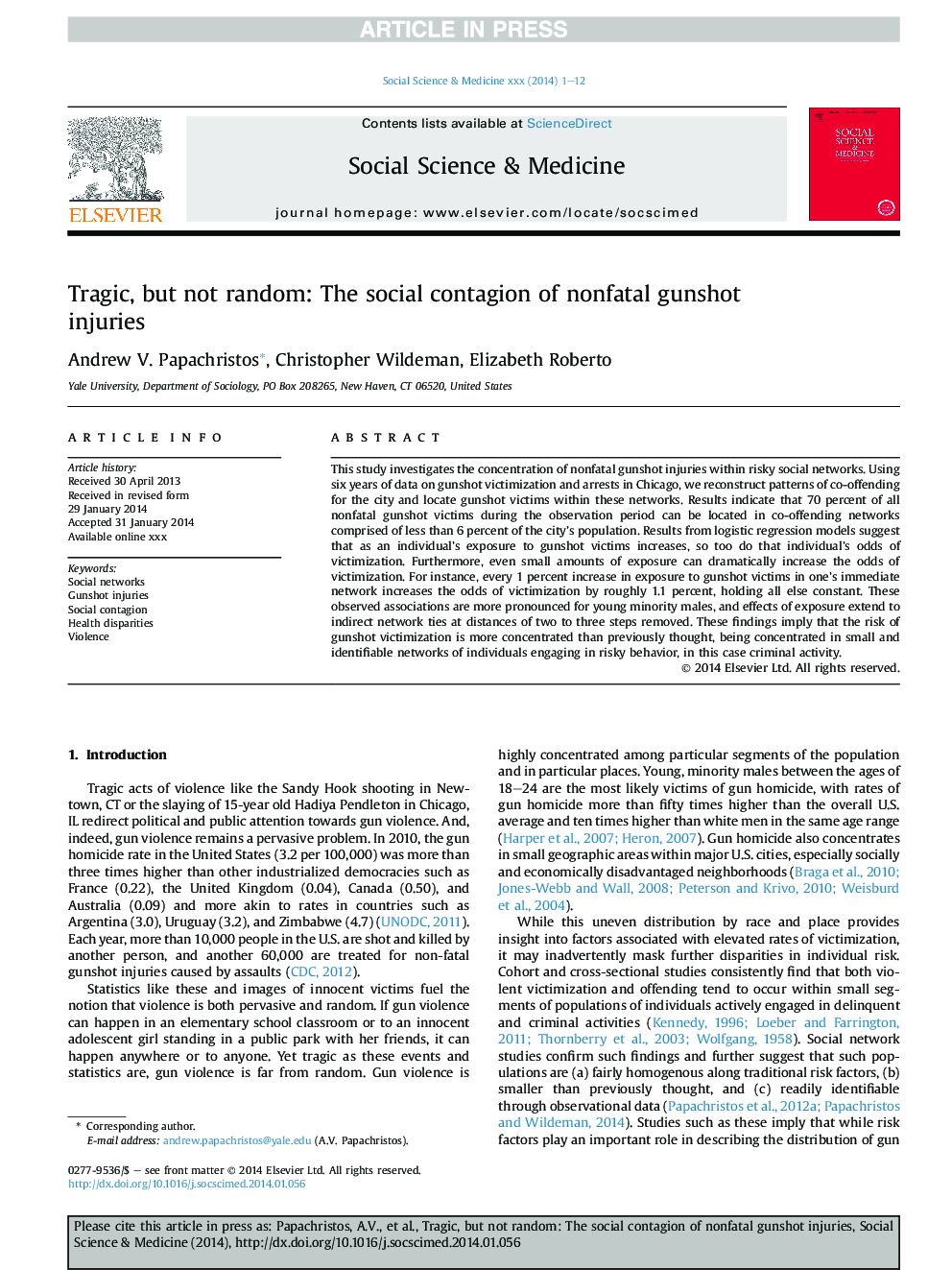| Article ID | Journal | Published Year | Pages | File Type |
|---|---|---|---|---|
| 7333595 | Social Science & Medicine | 2015 | 12 Pages |
Abstract
This study investigates the concentration of nonfatal gunshot injuries within risky social networks. Using six years of data on gunshot victimization and arrests in Chicago, we reconstruct patterns of co-offending for the city and locate gunshot victims within these networks. Results indicate that 70 percent of all nonfatal gunshot victims during the observation period can be located in co-offending networks comprised of less than 6 percent of the city's population. Results from logistic regression models suggest that as an individual's exposure to gunshot victims increases, so too do that individual's odds of victimization. Furthermore, even small amounts of exposure can dramatically increase the odds of victimization. For instance, every 1 percent increase in exposure to gunshot victims in one's immediate network increases the odds of victimization by roughly 1.1 percent, holding all else constant. These observed associations are more pronounced for young minority males, and effects of exposure extend to indirect network ties at distances of two to three steps removed. These findings imply that the risk of gunshot victimization is more concentrated than previously thought, being concentrated in small and identifiable networks of individuals engaging in risky behavior, in this case criminal activity.
Related Topics
Health Sciences
Medicine and Dentistry
Public Health and Health Policy
Authors
Andrew V. Papachristos, Christopher Wildeman, Elizabeth Roberto,
